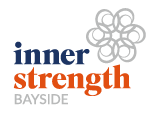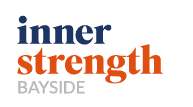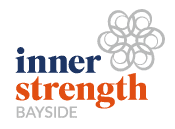How Does Trigger Point Dry Needling Help With Musculoskeletal Pain?
What is dry needling?
Commonly also known as trigger point dry needling, it is a procedure where fine needles (finer than what is used for a blood test) are inserted directly into the skin and the muscle for therapeutic purposes. These may include relieving acute and chronic pain, improving muscle length, altering muscle activation patterns or assisting with sleep and relaxation. The therapist may choose a dry needling technique over other manual therapy options as it is often less painful to the person while still being effective in achieving the treatment objective. The needle can be inserted at varying depths depending on the location and the body type of the person being treated.

What is a trigger point?
A myofascial trigger point is a localised tender spot on a band of taut muscle and is often painful when pressure is applied directly to it. A trigger point can be divided into 2 categories: active and latent. An active trigger point is painful without additional pressure; alternatively, a latent trigger point is painful only when pressure is applied. Presence of trigger points may lead to physical symptoms such as muscle weakness, poor muscle activation, or restricted range of movement. Furthermore, trigger point can alter the pain response within your nerves and brain contributing to referral pain or an increase response (more pain) to the original pain. In the most aggravating stage, trigger point can trigger pain by a stimulus (such as light touch) that is normally not painful.
Why dry needling?
Pain is probably the one thing that everyone can relate to. Whether the pain is derived from hitting your knee on the table, spraining your ankle while doing a high jump, or sustaining an acid reflex in your stomach, pain has a physical and a central component. The physical component in these instances are the body parts that are injured whereas the central component is the pain signal your nerves and brain are receiving from these injured body parts.
Dry needling in physiotherapy aims at treating musculoskeletal problems by attempting to alter both the physical and central components of pain. Insertion of needles trigger a response at the injured site to re-organise the muscle activation pattern, restore the original pain response, and relaxes the muscle fascia in the surrounding area. In short, dry needling treatment can relax the muscle, restore strength and movement lost due to pain, improve muscle activation pattern, reduce referral pain, and rewire and normalise the pain response.
What are some symptoms/diagnoses dry needling can treat?
- Muscular pain e.g. lower back, upper back pain
- Overuse injuries such as tennis elbow, shin splints, gluteal tendinopathy
- Referred pain such piriformis syndrome or a headache from neck tension
- Athletic injuries such ankle sprains, tight hip flexors
- Acute injury such as a neck whiplash pain
What should I expect in a dry needling session?
Your physiotherapist will ask you a comprehensive subjective history of the presenting problem followed by a physical examination. The subjective and physical assessments provide the basis of clinical reasoning required to rationalise dry needling treatment. If dry needling is considered clinically and symptomatically beneficial, your therapist will proceed to explain the goal of dry needling follow by potential post dry needling symptoms you may experience. A signed consent form is required to demonstrate your understanding of the treatment being delivered. The area undergoing treatment will need to be exposed (ie. not covered by clothes) to facilitate accurate palpation and needle insertion. You may feel slight soreness or discomfort with needle insertion; in some instances, dry needling may cause a slight twitch in the muscle. The entire session may require 30 – 45 min depending on the therapist and the condition being treated. Dry needling may be an adjunct treatment to other manual therapy and exercise rehabilitation.
If you believe dry needling may be beneficial to you, please contact us on 8555 4099 or book online.
Written by Michelle Lin, Physiotherapist.


